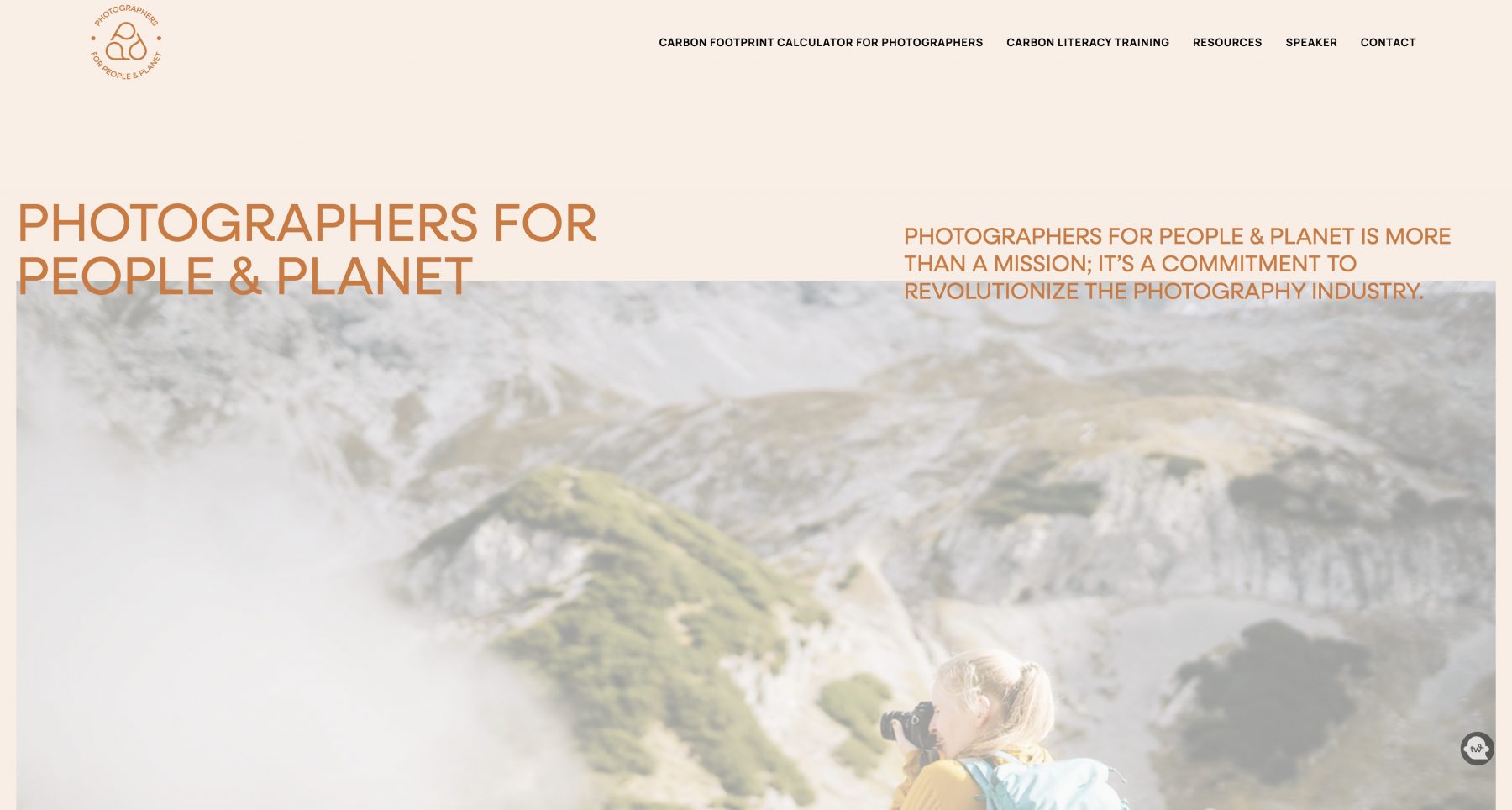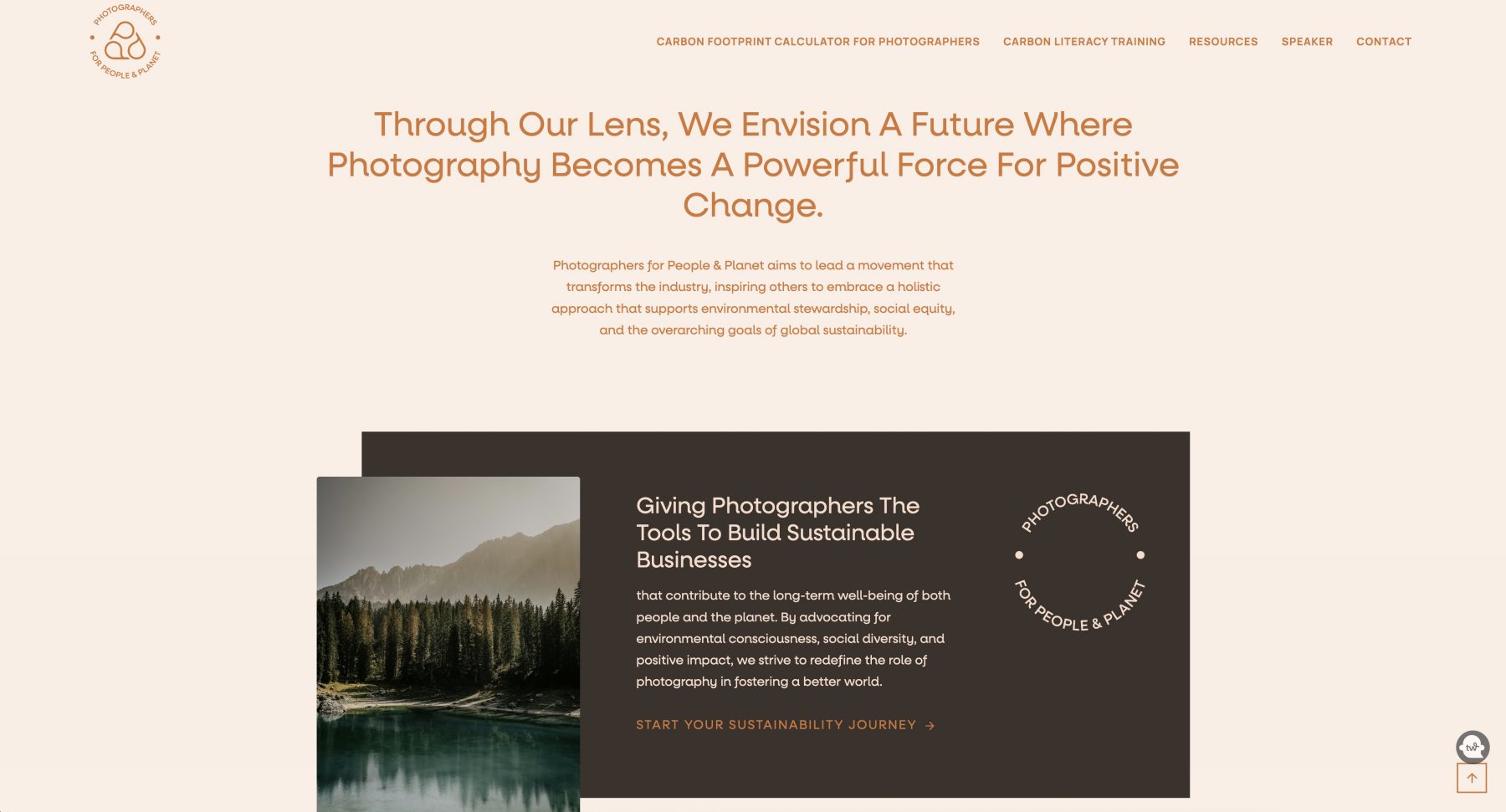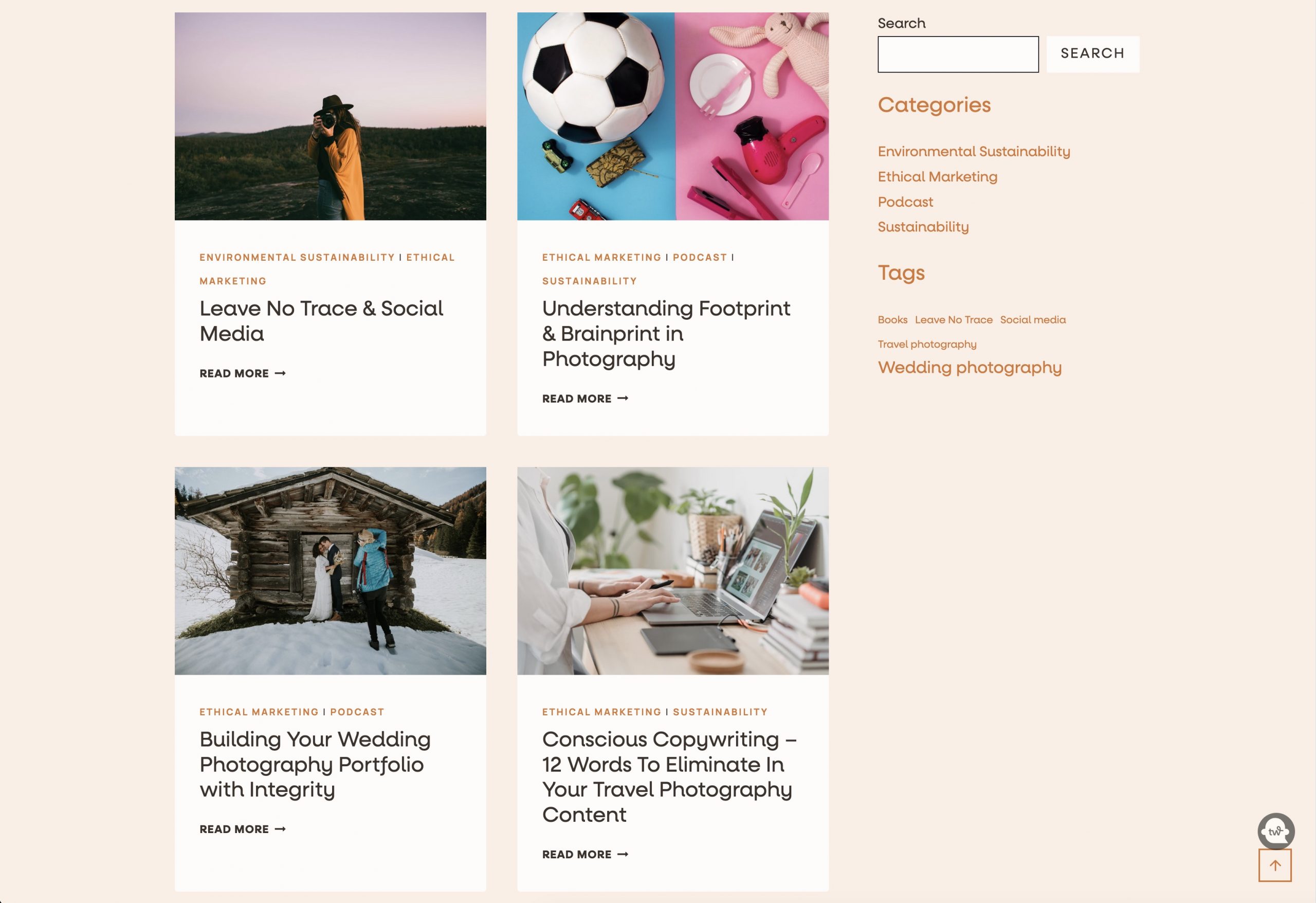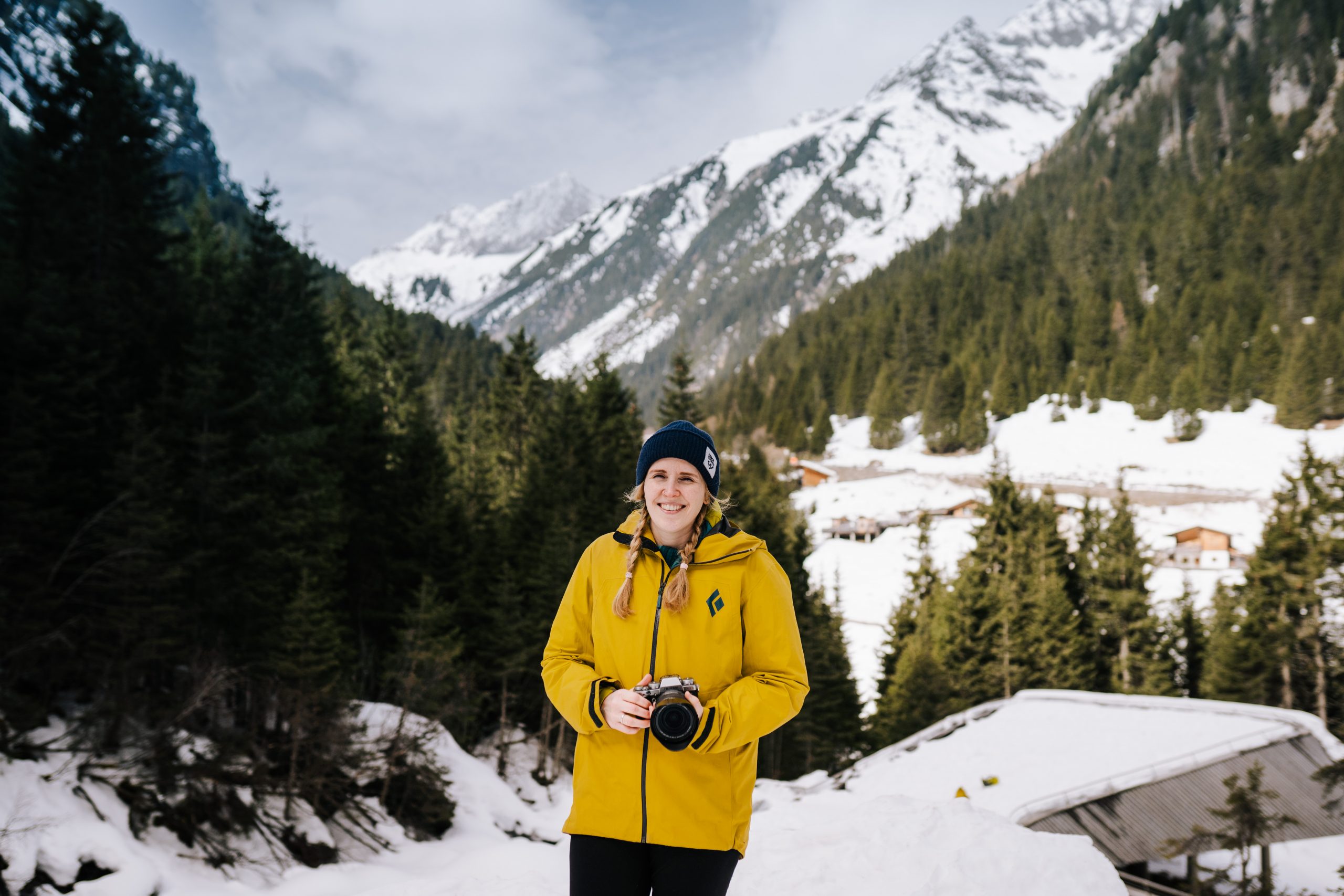Cat Ekkelboom-White – Build a Sustainable Photography Business
INTRODUCING CAT EKKELBOOM-WHITE
ELOPEMENT PHOTOGRAPHER & MOUNTAIN HIKING GUIDE
Cat Ekkelboom-White is a British photographer, ski instructor, hiking guide and certified coach, living in the Austrian Alps.
You can see her beautiful work on Wild Connections Photography which she started in 2015.
Her latest project is Photographer for People and Planet: “Helping photographers build sustainable businesses that create a positive impact in the world.”
Hi, I am Aida, host of My Wedding Season -The Podcast!
If you prefer listening, this blog post is also available in audio format on my podcast: Episode 63
PODCAST SPONSOR – PIC-TIME
ONLINE PHOTO GALLERIES FOR PROFESSIONAL PHOTOGRAPHERS
Disclaimer: I will earn a commission from Pic-Time, if you use my code – it has no extra cost to you, it is just a way to support me as a content creator! Read: Referral Programm / Affiliate Disclosure
Pic-Time is an advanced online gallery platform for photographers, offering beautiful galleries, a built-in print store, marketing automation, a slideshow creator, and blogs. They are enhancing their services using AI technology. Depending on the plan, you can use the AI Writing Assistant for Blogs, AI Image Filter and AI Photo Search for Clients.
If you have been tuning into this podcast long enough, you already know that I am a huge fan of creating SEO-optimized content, in the form of blogs, to attract potential clients.
Pic-Time now allows you to easily use your images that are already uploaded in a gallery to create a blog post. And then, with just a few clicks, you can easily generate SEO-optimized text for your blog. Don’t worry about it sounding machine-generated, because you can always go in and make changes for it to sound like you. It is just there to assist you in the process!
And now, you also have the ability to quickly filter through images in your galleries. This is particularly helpful when you want to share images with vendors after a wedding. Or you can use it to select images to share on social media – make sure you check out the newly revamped Mobile App!
Your clients are now also able to search through the gallery to find people or by using keywords. This feature allows them to easily share images and has proven to increase the likelihood of print orders because it is directly linked to the store.
And the cool thing is that multiple languages are supported including Spanish, French, German, and Portuguese.
When you are ready to upgrade to a paid plan to gain access to all these features, be sure to use the code AIDA to earn 1-month free!
MY WEDDING SEASON – THE PODCAST
INTERVIEW WITH CAT: MAIN TAKEAWAYS
(I, Aida, have at times paraphrased and other times directly quoted what Cat and I have said in the episode to make it easier to understand – this is not a direct transcription.)
Are you running a wedding photography business that is sustainable? Have you taken the time to consider different aspects of sustainability that takes not only the environment, but also the people and their cultures into consideration. This conversation with Cat Ekkelboom-White is a great starting point in your journey to becoming more intentional in terms of sustainability moving forward.
WHAT IS SUSTAINABILITY?
Aida: As everything evolves, what is sustatinability in 2024?
Cat: It has evolved and changed over time. For me it is long-term well-being for all people and the planet. Sustainability in the past has often been either around financial sustainability – the sustainabilit of running a business – or you have people who hear the word sustainability and go “recycling, renewable energy, eco-conscious” – it feels like those were kind of the two things.
Through my studies the past year, this definition was kind of the one that was used the most and I really liked it. There are so many aspects of sustainability but at the core of it, it is about quality of life for everybody on the planet, but not at the expense of the planet.

LEAVE NO TRACE
Aida: Yes, and I love that we are bringing people more to the forefront. Often in the past, I feel like the focus was often more on Leave No Trace. Can you explain this concept?
Cat: Leave No Trace especially comes up when I talk to elopement photographers. LNT was created by a non-profit in the US, and they have these seven principles around how to be a responsible citizen/person within the outdoors. A lot of that is really about common sense and not being inconsiderate about others or inconsiderate about the places that you are visiting by not leaving rubbish, by not destroying the environment. I don’t think that the principles have changed so much, but I have seen it become easy for people to pick and choose the aspects of that they like and kind of forget about the points that they find inconvenient/don’t want to follow.
Another part of Leave No Trace is planning and preparing for where you are going. As photographers, we need to put our ego aside and ask ourselves if we have the knoweldge to understand the nuances of the weather in this location; understand when I situation can be potentially dangerous; and having our clients’ best interests at heart.
Leave No Trace is also focused on natural, outdoor spaces. To be really ethically considerate and ethical as we work in the photography space, especially in destinations, there is a huge part of understanding cultural sensitivity – even if you are just going to a city in another country. Morocco is a popular destination – are we being respectful or just bringing a western way of doing things. It is not just photographers, it is tourists as well, but as photographers we have a big role because we share images afterwards as well.
RESPONSIBLE DESTINATION PHOTOGRAPHY
Aida: I see images online sometimes that really rub me the wrong way. I feel like some photographers are going after those wow images that are going to get those shares and likes. A lot of people don’t realise that it can be problematic, they are just seeing it for what it is.
As an African, it runs deep. I can’t see humans being used as a prop and think that it is okay.
Cat: I think people need to address their background, their priviledge. Again a lot of these destination areas, going into it as a white western photographer – and going, do I look at this differently? Do I come with stereotypes? Do I come with ideas in my mind of how I am going to shoot this that are not authentic?
It is not just about the work that we do professionally, but our work privately. I think it is important to have many diverse voices in the converstation.
Aside from Carbon Footprint, I know that travel can be incredibly powerful in helping connect people from different communities.
Aida: As photographers, when we share the images that we have taken, we need to share it by expressing that this is how I saw it, this is my viewpoint – it does not represent how it necessarily is. The way I see things are based on my personal experiences and that needs to be made clear, because at the end of the day, the images that we share are being consumed by other people. We bare a huge responsibility and I feel like that needs to be talked about more.
Cat: Yes, before we go ahead and post images, it is important to ask ourselves what story we are telling. What perspective am I telling it from? Am I being respectful to the people or am I potentially leading on a stereotype because that is easy and that is what I know?
CONSCIOUS COPYWRITING
Aida: You have a blog post where you talk about conscious copywriting – also referring to travel. There were words in there that I was aware of and there were others that I didn’t realise are problematic. Can you talk a little bit about that?
Cat: With so many of the words that we use everyday, I think that it is easy to forget the context. Who is saying it and what are you saying it about. For example, if you are using words like “discover” and “explore” – think about where these words got popularised. A lot of these words are very colonial in their history. And look at the context of what you are talking about.
Another word that is commonly used is Bucket List. It has driven a trend within the wedding space. I find that destination weddings sit at the bridge between travel and events. They don’t really spend time and money – they don’t really respect these locations and the people. It is all about checking off the bucket list. A lot of places are suffering because of it.
Aida: A lot of photographers are just trying to run a business and make a name for themselves. We are just running in this wheel – everything is so fast-paced. I think that it is time that we start to slow down. We need to be more intentional in how we go about building our business – really caring. I feel like in the whole of rush of things, we are missing that. We are chasing the algorithm, we are chasing …
Cat: … the award, the recognition.
Aida: Yeah, it is getting much.

PHOTOGRAPHY EVENTS
Aida: What other aspects can we consider?
Cat: Another aspect to consider is events for photographers. Big conferences, for example in Europe, can be prohibitive for people who have kids, for people with disabilities, for people with learning needs. For me, that is also another aspect of sustainability.
Aida: What would you say could be done?
Cat: I think that is just needs to start with conversations. I think that people who are running events should look at the people that they would love to come and see how they can make it so that they can come and attend these events. Having those considerations of who might be excluded and why – even if it is choosing a venue that is accessible to people with disabilities. Perhaps there are accommodations you have checked with in advance and it is an accommodation where they provide nanny service. Just having a conversation with your community and asking why some people might not come to events. Perhaps organising a mini event where childcare isn’t an issue. Or providing a live-stream version of the conference.
WHAT IS BRAINPRINT?
Aida: We already mentioned Carbon Footprint. Let us talk about Brainprint.
Cat: This is a concept that I learned about during my sustainability course. When we talk about sustainability for photographers, this is a core aspect. Brainprint is a psychological impact of the work that you do, the work that you share. What happens when we see an image of something and what that the drives in our behaviour or our thoughts.
As we talked about before, another really key part of that is stereotypes. Or even when you look at a photographers grid on social media, how many diverse types of people are represented? So if someone doesn’t see themselves being represented, they might think that they do not belong in this space. That is a part of brainprint as well – the messages that we give, often unconsciously, in the images that we share.
Aida: This all can seem quiet heavy. The takeaway should be to be more intentional, more reflective, and more thinking about your core values. How you are impacting people and planet. And how you can align yourself to those values. And how you can align your business. Nothing happens from today to tomorrow. I love that you said that things start with conversations and we are just having a conversation about it.
TAKING ACTION
Aida: For people who are ready to start this journey, what can they do to start implement it? What are some small steps that they can take right now?
Cat: One of the first things to do is head on over to the website “Photographers for People and Planet“. Just start reading through some of the articles. Like you said, there are areas that are linked with sustainability and being a responsible and ethical photographer. With what you find on there, ask yourself if it is something that is important to you. And then the next thing to do is to start bringing that awareness to the work that you are doing and to be transparent about your journey. Share the things that you are learning so that even if one other person has the “I never thought of it that way” moment, it is just bringing these conversations more out of this sense of shame. There is no shame about the journey that you are on. Just say that you have made mistakes and that you are embracing the fact that you are trying to do better.
Aida: That is such a good start. We are all on the same boat in that sense. It is about taking the time to try to understand it and wanting to be a part of the solution and not continuing to add to the problem.

I am so grateful to Cat for taking the time share so much valuable information with us.
Episode & Show Notes:
EP 63. Cat Ekkelboom-White – Build a Sustainable Photography Business
Connect with Cat Ekkelboom-White:
Instagram: @photographerspeopleplanet
Website: Photographers for People and Planet
Podcast: Photographers for People and Planet
Connect with Aida Glowik:
Instagram: @aidaglowik
Website: Aida & Tim Photography / Aida & Tim Hochzeitsfotografie
Workshop: Wedding Photography Retreat in Corsica, France
1:1 Mentoring Session: Book More Weddings | Book a Website & Portfolio Review
1:1 Coaching Session: Book a Clarity & Action Session
Free Download: My Wedding Season Digital Planner

